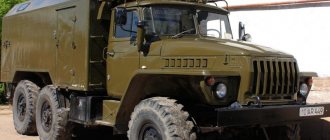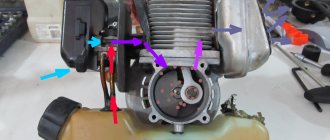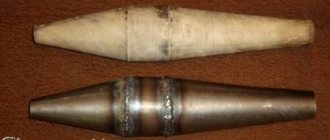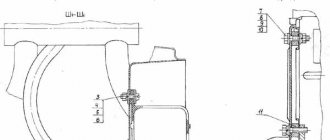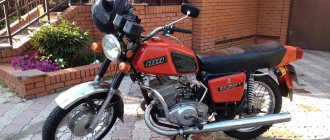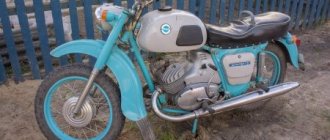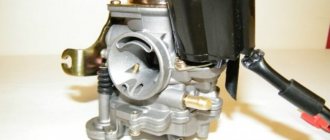Izhevsk motorcycle can certainly be considered one of the most elegant and reliable. Being very light and compact, this motorcycle is capable of carrying incredibly large loads. Thus, the IZ Jupiter 5 engine is capable of withstanding a load of 500 kg !
This is an excellent result. The motorcycle itself looks sporty. Classic minimalism of the Soviet period was intended more for the youth of that time, but was popular among all age groups.
IZH has the ability to install a cargo module or stroller, which is very convenient when transporting passengers or massive cargo. At the same time, it has excellent cross-country ability on any soil or road surface. However, traction is significantly reduced in wet weather, and stability issues may arise in muddy conditions.
The unit is very unpretentious to weather conditions. In severe frost, down to -30 degrees, starting the engine is not difficult. Even in extreme heat, there are no problems with overheating.
The characteristics of the IZH Jupiter 5 engine were quite good for Soviet times. The two-cylinder engine produced about 25 horsepower, allowing the bike to accelerate to 120 km/h. For comparison, Ural and Dnepr motorcycles had an average maximum speed of approximately 110 km/h . However, like any Soviet bike, problems arise with reliability. Frequent engine repairs of the IZH Jupiter 5 are part of the operation of the motorcycle.
Main problems and their solutions
Disassembling the IZ Jupiter 5 engine, the video of which is presented below, is carried out not only as problems arise, but also for preventive purposes. For example, cleaning the carburetor is one of the conditions for maintaining stable engine operation.
The IZ Jupiter 5 engine diagram is simple even for inexperienced motorists. Therefore, during repairs there will be no difficult issues. In most cases, breakdowns occur due to the negligence of owners who improperly operate the moped and do not perform regular maintenance. For example, incorrect selection of oil for a particular time of year. So, if any part wears out, it must be replaced.
- Spark plug.
- Cylinder head of a motorcycle engine.
- Motorcycle engine cylinder.
- Exhaust system window.
- Cylinder piston.
- Cylinder piston ring.
- Bypass system channel.
- Motorcycle piston pin.
- Crankshaft connecting rod.
- The left half of the engine crankcase.
- Leading star.
- Left crankshaft axle shaft.
- Clutch system spring.
- Adjustment type screw.
- Pressure clutch disc.
- Pedal on the gearbox (gearbox).
- Starting pedal.
- Clutch discs.
- Gearbox fork.
- Half of the engine crankcase is right.
- Cylinder head of a motorcycle engine.
- Motorcycle engine cylinder.
- Motor flywheel.
- Cover of the crank chamber of the Izh Jupiter 5 engine.
- Motorcycle generator.
- Moto breaker cam.
- Gearbox gears.
- Gearbox gears.
- Cam for automatically turning on/off the clutch mechanism.
Engine diagnostics and repair
It is sometimes impossible to find the cause of a breakdown after one visual inspection. In some cases, complete disassembly of the IZH Jupiter 5 engine is necessary. But if you find out the reason, you can quickly solve the problem yourself. Here are examples of main faults and repair recommendations:
- If your kickstarter turns on the crankshaft, you must:
- Tighten the fasteners more tightly, and in case of severe damage, replace the kickstarter shaft and lever. This usually happens after the IZ Jupiter 5 engine has been boosted.
- If the oil is selected incorrectly, especially if it is very viscous in winter, it is necessary to select a more correct temperature regime.
- If the trigger spring is weakened, it must be replaced.
- If no fuel gets into the carburetor, you should clean it in a solvent, and also blow out the channels and fuel supply hose with pressurized air.
- If there is no spark in the combustion chamber, replace the spark plug or clean it.
- When the throttle valve sticks, it is necessary to adjust its drive and clean the carburetor.
- If the engine is unstable or does not start the first time, it is worth checking:
- Fuel supply system. The fuel mixture may be oversaturated with air. The solution to this problem is to replace the air filters and install new gaskets.
- Is the capacitor OK? If strong sparking occurs between the contacts, the capacitor must be replaced.
- Severe wear or burning of the spark plug. In most cases, it is the spark plugs that cause poor starting and uneven engine operation.
- In cases where the engine stalls after a short period of operation: The drain hole of the fuel barrel should be cleaned.
- There are cases where the carburetor needle falls out. It needs to be inserted into place and adjusted.
- Cleaning and purging of carburetor channels and jets.
There are many questions about how to assemble the IZH Jupiter 5 engine yourself, modifying it. For example, installing a more reliable carburetor or a more stylish and louder muffler can be produced quickly enough without significant financial investment.
Tuning an IZH Jupiter engine with your own hands is possible if you have enough time and enthusiasm. You just need to be persistent.
The motorcycle has a favorable ratio of cost, build quality and maintenance requirements. An ideal option for people with a small budget and those who want to get universal equipment. However, frequent breakdowns will take a lot of time. It's worth being prepared for this, since some bikes can be 40-50 years old.
Increasing the power of the IZH Jupiter engine 5. Boosting and refining the IZH Jupiter engine.
Increasing the power of the Izh Jupiter engine. Boosting and modification of the IZH Jupiter engine. Theory and practice. Izha tuning. modification of cylinders, ignition, .. installation of reed valves, 2 carburetors, resonators, and much more.
Boosting the IZH-PS engine. Let's cheer up the "old man."
Yuri BATURIN, Suponevo village, Bryansk region.
(Page 2)
[1] [2]
Idle system after modification. The compensating hole (in the red oval in the figure above) and the place where the throttle valve cutout is increased. On the right, the green oval shows the section of the throttle that needs to be cut down.
In “Moto” No. 8-03, in an article about the repair of the “Izhevsk” gearbox, the author quite rightly notes that the retaining plate for the bearings of the primary and secondary shafts, located under the clutch basket, must be hardened. Otherwise, at the slightest defect in the gearbox gears, an expanding force arises and bends the plate. The first signal about this is the spontaneous switching off of second gear under load. In the Izh-PS, this drawback of the gearbox is aggravated by the fact that its motor transmission is made to reduce noise with helical teeth, and when you accelerate or suddenly release the clutch lever, a force arises that pulls the gearbox input shaft in the “unnecessary” direction and bends the plate. They even managed to bend a hardened part (on the first PSs). On my motor, I replaced the standard plate with a hardened one, and the standard M5 mounting bolts with M6. Their heads are larger, which means there is less “leverage” for its deformation.
Having tried several options for strengthening the clutch mechanism, including using parts from the CZ-125 (with steel drive disks), I settled on the standard design for now, but installed Izh-P5 drive disks with wide (16 mm) working lugs - they much stronger. The modification boils down to increasing the width of the grooves in the clutch “basket”. The wide tabs still shear off, but not as quickly, and cause very little wear on the grooves in the “basket.” Another advantage of Izhevsk textolite discs over steel ones is their elasticity. By absorbing jerks in the transmission, they do not so actively pull the input shaft out of the gearbox.
When I was fine-tuning the clutch, I tried installing gearbox gears from the Izh-P5 to reduce the load. With a little modification to the crankcase this is possible. But it turned out that due to the large “holes” between the gear ratios (especially the first and second), this option is unacceptable for active driving. Although the clutch is really unloaded. After the modification, the engine “rips” from idle. It is also felt that it is working at the limit of the cooling system. After 2300 km, a piece of the piston inter-ring partition flew out of the exhaust window. Apparently, the piston brought some hidden defect from a past, cross-country life. But the homemade rings did not break, and I drove the remaining 18 km under my own power. I took another piston, also used, but not as worn out as the previous one. I sharpened it, installed it, and I’m riding. Satisfied.
From the editor
In the late 70s and 80s, some Izh-PS owners, having had enough of its dynamics, in search of a larger one, bored the cylinder for the CZ-500 piston, bringing the engine displacement to 396 cm3. Often this experiment ended with a burnt-out piston (one such craftsman, who had unlimited access to a warehouse of sports motorcycle parts, “burned” about a dozen pistons). At the same time, those who took their work seriously received excellent results. The author correctly noted that after such a modification the engine operates at the limit of the cooling system's capabilities. You can significantly reduce the temperature of the piston by making a hole in it from the side of the purge channel, which is located between the inlet windows. Its width is equal to the width of the channel, and its height is 6-8 mm. Accordingly, it is necessary to file the lower edge of the window of this channel (as shown in the figure) so that at BDC the fuel-air mixture, superheated under the hot piston bottom, exits into this channel. In addition, with intensive circulation of the fuel-air mixture under the piston bottom, lubrication of the needle bearing is improved. There are known engines that worked reliably after such a modification with a gap between the piston and cylinder of only 0.05 mm. When filing the exhaust window, be sure to maintain the radii in its corners, otherwise cracks in these places are inevitable. And on the top and bottom edges, to make the rings easier to work with, make a 1×45° chamfer. The windows in the Izh-PS cylinder are located differently than in the CZ, therefore, to prevent the ring locks of the “Czech” piston from getting into them, you need to rearrange the ring stoppers. For long-distance travel, it makes sense to install a drive sprocket with 18 teeth (you may have to slightly modify the crankcase for this). In this case, the motorcycle in fourth gear is less sensitive to the throttle position and it is easier to maintain a constant speed. And, most importantly, after boring the cylinder, the service life of the liner and the bearing of the lower head of the connecting rod will become significantly lower, as, indeed, after any boost. Therefore, do not use M8B or other Zhiguli oils in gasoline - only high-quality ones for 2-stroke engines. To achieve the best results from an engine converted in this way, you need to change the dimensions of the muffler. How to do it? You can try to calculate it yourself, using the method described in the article “The pipe should not choke” (Moto, No. 7-04). Or try to find I. Grigoriev’s book “Motorcycle Without Secrets” in a technical library or on the Internet. It shows the dimensions of the resonator for an engine with a displacement of 400 cm3, made on the basis of CZ motocross parts.
Modification of the piston and cylinder to improve cooling of these parts and better lubrication of the connecting rod upper head bearing (highlighted in red should be removed).
(Page 2) [1] [2]
Also see the article IZH "Junker" Also see the article IZH-6.903 Also see the article Tuning Jupiter Also see the article Extend the path of the "Planet" Also see the article Characteristics of Planet-Sport Also see the article IZh motorcycle - the most common "Planet" Also see the article Jawa-350/634 and Izh-PS 350 Also see the article Repair of the Izh-Yunker engine Also see the article Modernization of the Jupiter engine
Source of material: MOTO magazine
